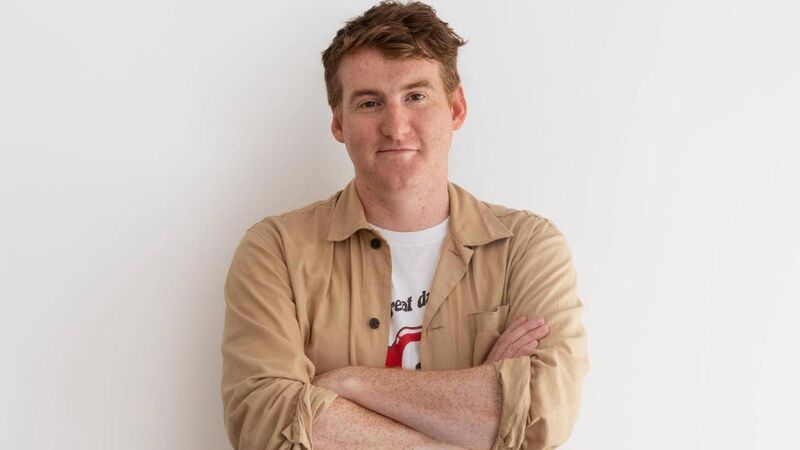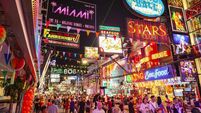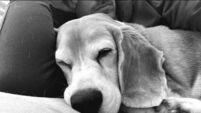Séamas O'Reilly: Things are tough but at least we have running water and YouTube

Séamas O'Reilly. Picture: Orfhlaith Whelan
Halfway through this season of HBO’s prestige zombie series, I find myself reflecting on my enjoyment of this kind of fare.
I’ve previously noted that dystopian visions of the world can be a bit oppressive, and I’ve love to see more art that depicts a positive, fun, space-age future like The Jetsons did.
I will reiterate that this is undeniably true, but I need to acknowledge that, for all their doom and gloom, I love the depressing bleakness of a post-apocalypse as much as the next man. In fact, considerably more than the next man.
Despite having a extremely low tolerance for physical discomfort in real life, I find survivalist fiction irresistible. I’ve watched every movie ever made about someone becoming stranded in a sprawling forest, or having to endure a desert or frozen wilderness.
I appear to be the only human being on earth who watched all of Netflix’s , in which a young city slicker ends up alone in the wild following a plane crash, a show so instantly forgettable I can’t even remember where she crashed — Canada? Colorado? Cabinteely? — and yet watched its entire six- hour run.
What I mean to say is, I don’t just enjoy this genre when it’s done well. It would be easy for me to sit here and extoll the virtues of since it is currently topping every critics’ charts, and is a superbly written and acted meditation on hope and loss, which is filled with nuance and emotional heft as well as, you know, fungus-infected zombies.
Ditto last year’s excellent a show which posed existential questions of humanity, family, politics, and art, in a world that just so happened to have fallen apart in a flu pandemic.
To be clear, I loved both shows but I will basically sit through any old shite if it gives me a perilous, overgrown world populated with people and things that look like they’ve crawled out of a rusty skip.
At root, I imagine the appeal of these shows is functional; they’re exciting, with a narrative form that provides a constant engine of threat and violence. It also doesn’t hurt that a post-apocalyptic setting practically begs cinematographers and art directors to create vistas of distressed and ruined places, artfully decked with wreckage and destruction.
I can’t count the number of times I’ve seen the same obligatory shots of highways filled with rusted cars, the damp, moss-strewn interiors of houses that have gone to seed and, yet, they still work on me. Perhaps it’s a sort of reverse-wish-fulfilment, a holiday away from my own suite of everyday problems, to a world where everything is destroyed, good and bad. The chance to look at my own life and say, well, things are tough but at least we have running water and beds and Thai restaurants and YouTube.
Just beneath that layer is another, darker thought which, I believe, lies there unspoken for most of us; a trickling sense that we might maybe, just maybe, enjoy a world like that one for a while. Yes, we might die of dysentery, be eaten by a bear, or have our arms ripped off by a fungal zombie, but we wouldn’t have to sort out our taxes, visit the in-laws, or recycle quite so much. No more meetings. No more car insurance or passport applications. Sure, I’m moved by the terror and suspense of these characters’ lives, but I also can’t help thinking that they’ll never have to fill out a form again. This abdication of one strata of petty responsibilities, even though it comes with many more problems we’d likely grow tired of — lack of the basic utilities necessary for human life, roving hordes of the undead, etc — does have its own bleak attraction.
I suppose the greatest paradox of the apocalypse genre is that I place myself in the protagonists’ shoes at all. Like everyone else, I watch the characters in , or and wonder which of them I’d be in this scenario; the rugged scrounger or the self-taught medic, the adventurous scout or the guy who makes ingenious contraptions from old car batteries.
Leaving aside the fact that I have none of the skills that would help me prosper in any of the above vocations — I don’t even know how my battery works in the car it’s currently in — I rarely reach the most obvious logical conclusion; that I wouldn’t be there in the first place.
We would all, obviously, be one of the dead people they walk past every day. Like those people who claim to recall their past lives and always seem to have been pharaohs or Florentine aristocrats — and never the 99.999% of Earth’s residents who did not live to see their faces printed on local currency — the real absurdity is the idea that I’d be one of the lucky ones in an unlucky world, at all.
Since most of these shows are predicated on worldwide societal collapse, the chances of us not filling out the ubiquitous piles of corpses, or the teeming ranks of the brainless undead, are fairly remote. You and I would be the guys coughing up their guts up on the street, the hapless passengers sucked out the big hole in the plane, the people saying “I don’t feel so good” in a blink-and-you’ll-miss-it wide shot in the pandemic movie, just before blood comes out of our eyes and mouths. I’d like to think I’d at least get the chance to be turned into an undead monster in a zombie movie but, if I’m honest with myself, I’d probably be a screaming civilian, rolled over by an advancing tank when the military are called in to suppress urban areas once the infection breaks out.
Given those options, watching grubby, competent people face death and terror in my place seems oddly comforting. In the meantime, we still have YouTube in this universe, so I’m off to find out what a car battery does. I’ll make myself useful yet.









